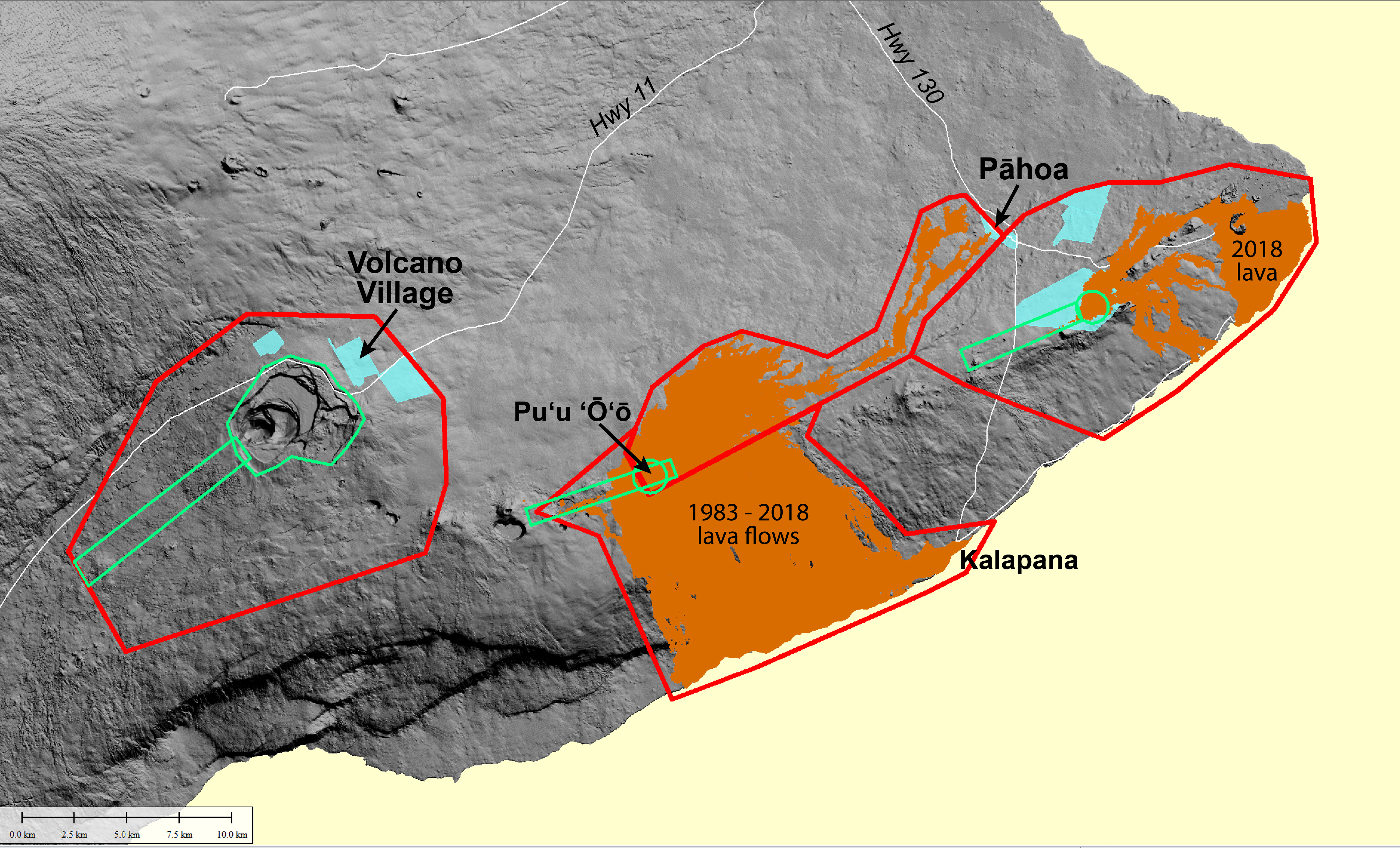Low-Flying Copter to Survey Kīlauea Summit & East Rift Zone

During the lidar survey, equipment will be mounted on a bright yellow Hughes 500 helicopter like the one shown here. The helicopter will fly in a northeast or southwest direction over the survey areas depicted on the map. PC: Windward Aviation.
Residents near the Kīlauea Volcano summit and along the East Rift Zone should expect to see and hear a low-flying, yellow helicopter flying back and forth in a NE-SW direction over preplanned flight lines. These helicopter flights are currently planned June 13 to 30, 2019, weather permitting.
A helicopter is necessary to conduct a high-resolution lidar survey and to collect digital multispectral images to document changes that occurred during the 2018 Kīlauea volcanic activity.
During the survey, the USGS asks residents for their patience and understanding regarding the helicopter noise as we complete this important survey.

Areas on Kīlauea that will be covered by a helicopter lidar survey in June 2019. Red lines enclose areas over which the survey helicopter will fly at 1,300 feet above ground level. Green lines enclose areas over which the helicopter will fly at 500 feet above ground level. USGS map
Most flights will be at an altitude of about 1,300 feet above ground level. However, in a few East Rift Zone areas (Leilani Estates, Alaʻili Road, Puʻu ʻŌʻō), at the summit caldera, and on the upper Southwest Rift Zone, flights will be at an altitude of 500 feet above ground level.
Data acquired during this survey will enable USGS scientists to model where new lava flows may travel if renewed volcanic activity occurs in the lower East Rift Zone. From an emergency management perspective, having accurate elevation models was crucial during the past two Kīlauea eruption responses (2014-15 and 2018). The precision of this new lidar survey will also improve the accuracy of earlier data sets which support ongoing scientific studies of past eruptions.
Data collected during this survey will be used by USGS scientists to produce a digital elevation model from which the volumes of erupted lava and summit subsidence in 2018 can be calculated. Products from the survey should be publicly available by late 2019.
Windward Aviation, a Maui-based helicopter company, will conduct the survey under contract to Quantum Spatial. Experienced pilots, who are specially trained for low-level flying required for geophysical surveys, will operate the helicopter. The company works with the Federal Aviation Administration to ensure flights are in accordance with US law.
This survey is a followup to the USGS lidar survey of the Puna area in July 2018 by the same contractor.
















